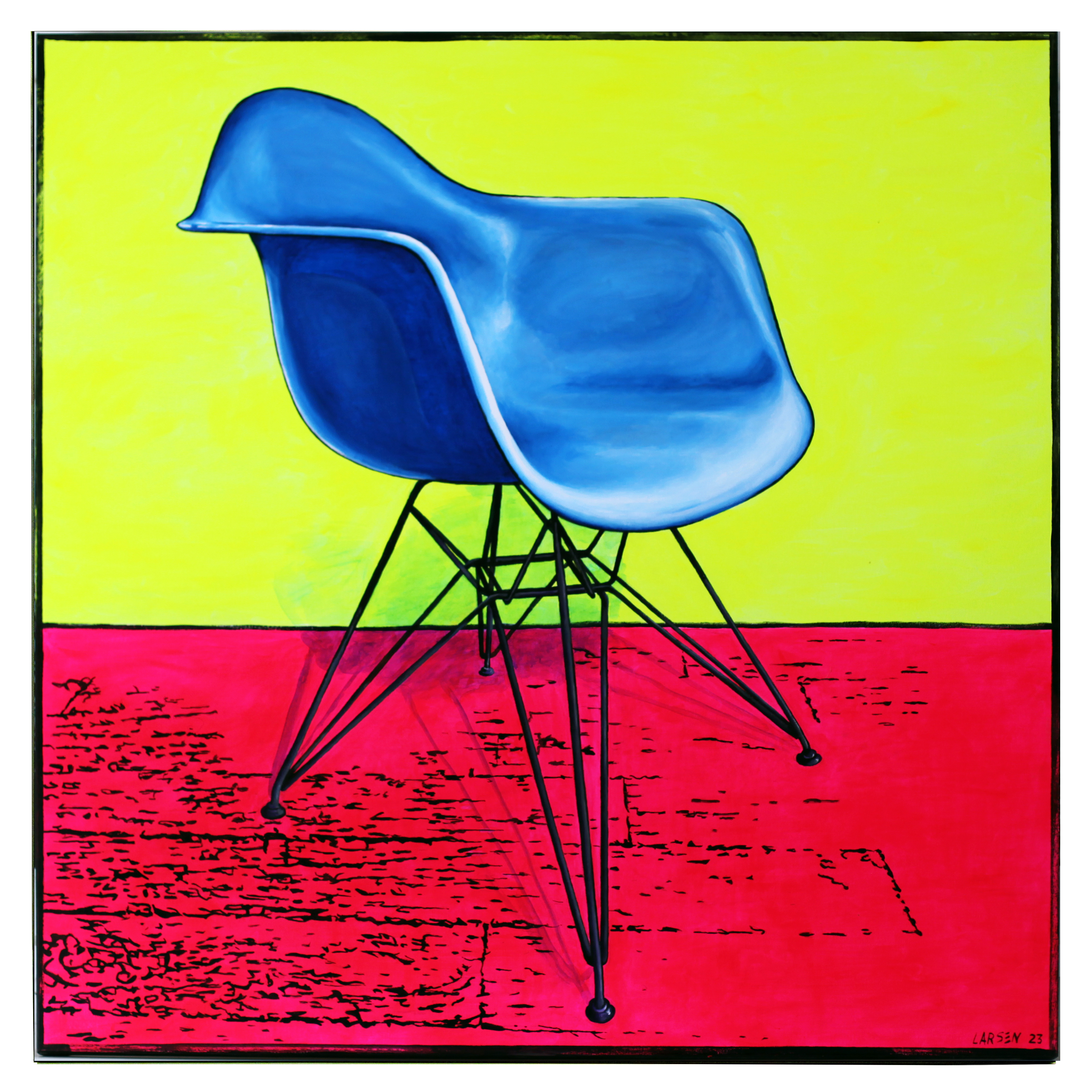Some More Chairs
Johnathon Larsen


Here I continue what I started with ‘Some Chairs’ in Some Islands 1. Last time I produced paintings of five chairs. I was invited back. I present eight more.
What is chairness? What makes a chair a chair? Does it merely provide the necessary support for a sitting position and the corresponding tectonic gesture? Because by availing four legs and a back or do they offer more? Chairs have been used since antiquity. They are among the oldest forms of furniture. Early Egyptians made chairs with animal legs. Chairs generally designated privilege and stature rather than being of functional, everyday use. Many sat on chests, benches, and stools until The Renaissance in the sixteenth century. Some cultures live without chairs where people crouch, kneel, and sit cross-legged.


The advent of the industrial production of chairs made them cheaper and significantly more available. During the twentieth century, metal folding chairs, ergonomic chairs, moulded plastic and plywood chairs, and TV recliners broadened the appeal of the chair. Designs evolved reflecting fashions of the day. During the 1930s the Bauhaus movement removed unnecessary ornamentation and the chair evolved to the standard of sculptural art. In this suite, a select corpus of designer chairs are rendered in fluoro colours using a post-pop style.
Pop used images from popular mass culture to emphasise the banal or kitsch. These images of high design are made relatable and accessible using a cartoon-like style that suggests Keith Harring and Walt Disney. These objets d’art became chattels of an elite. Their painted representations are repurposed for audience inclusion. It is intended that you will look again and again.


These chairs hover between the purely abstract and the softly literal. The architectural in these paintings considers how concept ‘chair’ as produced and abstracted outcome and representational consequence is design-based, language-related, and island-like. Painted-chaired representation in visual art language. And people like them.
These inculcate the built-designed with the un-non-spoken-insular. Seating portrayals are as much utilitarian as they are sculptural, functional as much as utterly useless bar their aesthetic value.
When asked, ‘What is language for or about?’, many would say, ‘It’s about communication and getting your point across.’ Further, most might say, ‘Designing a chair is about creating functional objects to sit in. Any chair-focused design outcome should fulfill the primary purpose of designing a functional object with its beauty being largely linked to its utility.’ And here we are again, back at chairness.

